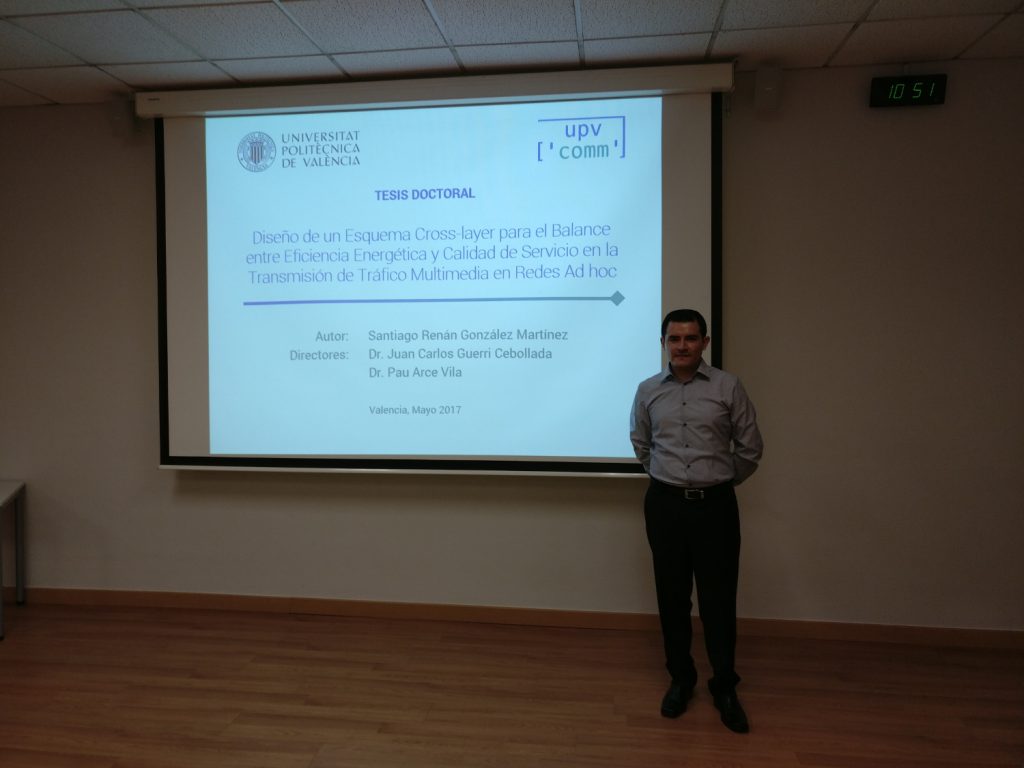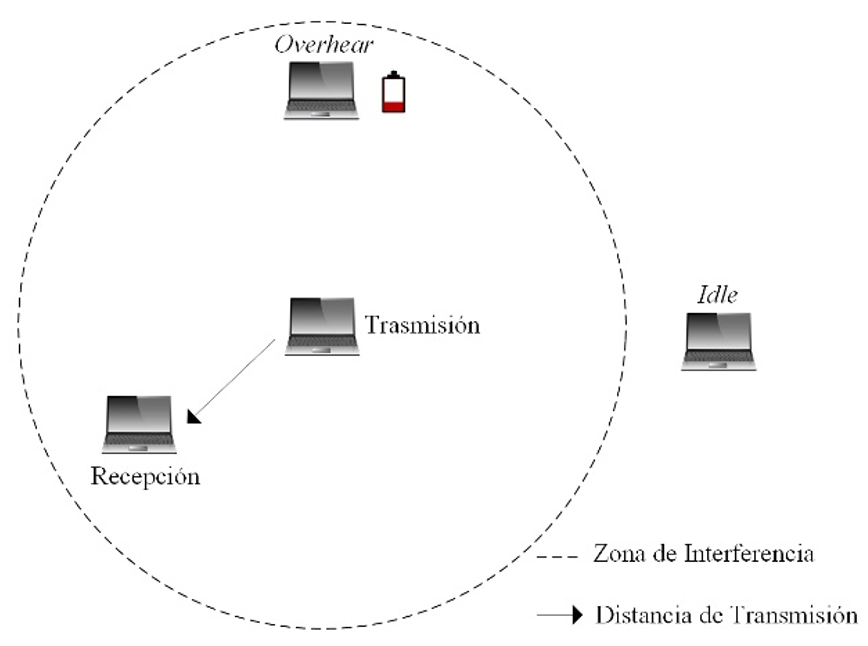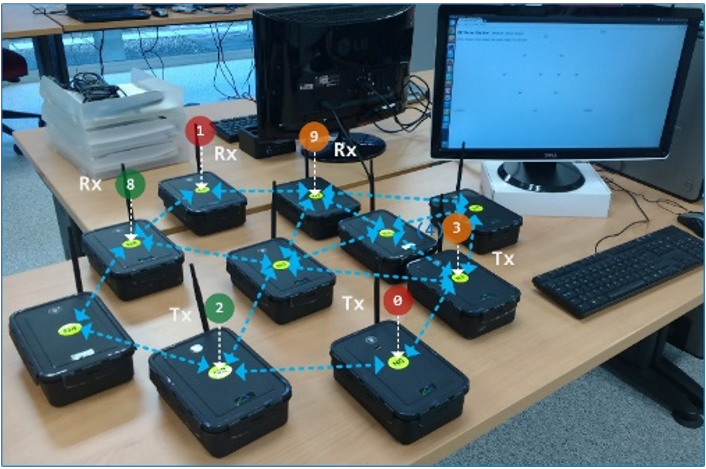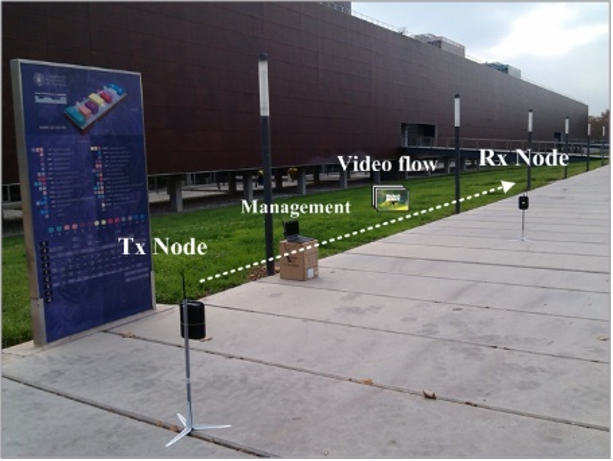On the 30th May, our colleague Santiago González presented his doctoral thesis, titled “Design of a cross-layer scheme for the balance between energy efficiency and Quality of Servicio in multimedia traffic transmission in ad hoc networks”.

The Doctoral Thesis Tribunal was composed by Dr. Álvaro Suárez Sarmiento, from la Universidad de Las Palmas de Gran Canaria, by Dra. Mónica Aguilar Igartua, from Universitat Politècnica de Catalunya (UPC), and by Dr. Francisco Martínez Zaldívar, from Universitat Politècnica de València.
The thesis addresses the problem of energy constraints in ad hoc Wireless networks. In this sort of networks nodes are generally powered by means of batteries, which involves significant limitations regarding the time of operation of devices. The nodes whose battery level describes important energy depletion represent potential elements for loss of connectivity, which results in an increase of packet loss rate. Therefore, the management of energy expenditure is one of the main research challenges to face in ad hoc networks, especially when developing applications in real scenarios. However, energy management is not a trivial task due to the inherent features of this kind of networks, such as the distributed operation as well as the access médium mechanism. In that sense, traditional solutions of energy optimization based on the definition of power-saving intervals (sleep mode) are not suitable considering the operational characteristics of an ad hoc network, due to the substantial deterioration of network connectivity. In addition, the exponential growth of applications focused on the transmission of multimedia contents (especially video) available on mobile devices involves specific quality of service levels. Consequently, the design of solutions for the optimization of energy resources should be carried out without degrading the Quality of Experience perceived by the users. The contributions of this thesis are focused, in the first place, on the analysis of those factors which generate an increase of the energy consumption in the wireless médium and are related to the principle of operation of the radio interface. In particular, the intense operation in reception mode on the interference areas, as a result of the overhearing effect (Figure 1), as well as the high number of transmission retries due to cannel access contention, are defined as the main aspects that increase energy demand in the network.

Figure 1. Overhearing effect
On the other hand, with the aim of optimizing energy resources in the nodes without causing damage on the Quality of Service, this thesis proposes meaningful improvements to the routing protocol by means of a cross-layer scheme. Specifically, the designed mechanism carries out an evaluation of both the energy capacity available in the nodes and the distribution of devices along the wireless medium. To that end, this proposal introduces a new metric in the routing computation process, called strategic value, which reports the importance of a node in the network in terms of connectivity (i.e. number of neighbor nodes). This scheme aims to reduce the energy expenditure caused by the overhearing effect along the areas with higher node density as well as to extend the lifetime for those nodes with higher number of neighbors which are strategic to preserve network connectivity. Additionally, considering the current pragmatic approach in ad hoc networks focused on the design of specific applications, the evaluation hereby presented has been performed by means of a simulation environment and also through the implementation of a testbed (Figure 2). Specifically, the operation of the proposed scheme has been analyzed on a set of ad hoc nodes which has been implemented through development platforms. Results prove that the proposal allows to extend the lifetime of the network as well as to increase packet reception rate as a consequence of the prevention in the route breakages due to energy depletion.


Figure 2. Experimental evaluation
Here you can see a summary (in Spanish) of the presentation used in the thesis defense.
And if you want to see some photos of the thesis defense, you are welcome to visit our Facebook.
